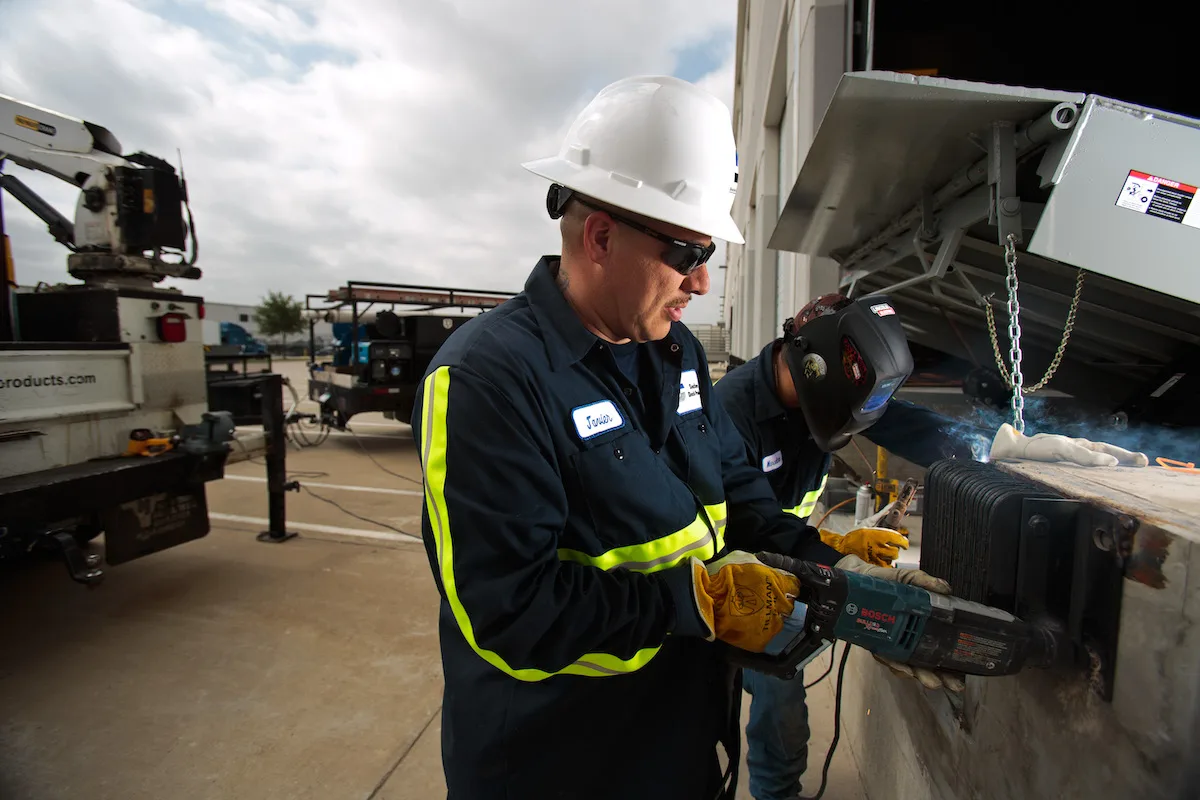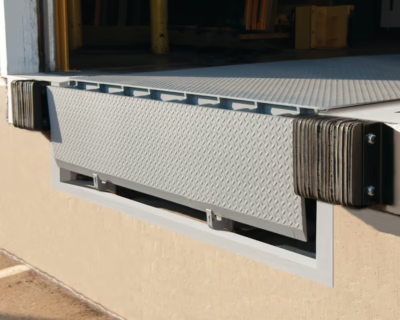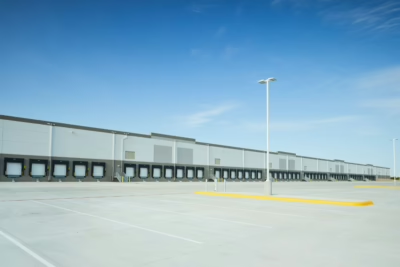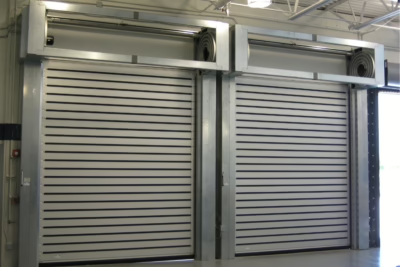For industrial and commercial facilities, loading docks are critical points of operation. They’re where products move in, orders ship out, and timelines are met. But when dock equipment fails or operations stall, the ripple effects are costly — including lost productivity, missed shipments, safety risks, and unexpected repair bills.
To keep your facility running efficiently, it’s essential to understand the most common causes of loading dock downtime and how to proactively prevent them.
1. Equipment Failures
Mechanical Wear and Tear
Dock levelers, overhead doors, and vehicle restraints are used constantly. Over time, mechanical components degrade — especially when they’re not properly maintained.
Common issues include:
- Dock leveler springs losing tension
- Roller wear on sectional doors
- Failing welds or hinges on older equipment
Solution: Establish a preventative maintenance program that includes visual inspections, lubrication schedules, and part replacements based on manufacturer timelines.
Hydraulic and Electrical Malfunctions
Many modern loading docks rely on powered equipment. When hydraulics leak or electrical components fail, operations can come to a halt.
Typical culprits:
- Worn-out hydraulic cylinders or hoses
- Short circuits or faulty control panels
- Dead batteries on dock communication systems
Prevention Tip: Keep an up-to-date maintenance log and test all powered systems weekly. Include fluid level checks, control box inspections, and cycle tests for lifts or levelers.
2. Human Error and Safety Incidents
Improper Equipment Use
When loading dock equipment is used incorrectly — such as forcing a dock leveler to operate under excess weight or bypassing safety restraints — it increases wear and risk of breakdowns.
Why it matters: Misuse can lead to unplanned downtime and costly repairs, and even void manufacturer warranties.
Prevention Tip: Train employees on proper usage procedures for every piece of equipment. Consider using visual instruction decals or signage near each dock station.
Accidents and Near Misses
Incidents such as slips, trips, falls, or collisions between forklifts and dock equipment can cause operational standstills while investigations take place.
Risk factors:
- Wet or oily dock surfaces
- Improper PPE use
- Unclear traffic flows between forklift zones and dock doors
Solution: Implement clear safety protocols, maintain non-slip surfaces, and use dock barrier systems where appropriate.
3. Vehicle-Related Issues
Trailer Creep and Early Departure
Trailer creep occurs when a trailer slowly moves away from the dock during loading/unloading due to repeated impact or incline. Early departure is when a driver mistakenly pulls away while workers are still inside.
Consequences: Equipment damage, product loss, or serious injury.
Prevention Tip: Install vehicle restraint systems that secure the trailer during loading and prevent departure until safe. Integrate restraints with visual communication lights to signal status to dock personnel and drivers.
Poor Alignment and Dock Fit
If a trailer doesn’t align properly with the dock, it can damage bumpers, seals, and levelers — or require time-consuming adjustments.
Causes:
- Poor yard conditions (mud, snow, uneven pavement)
- Lack of visual guidance or wheel chocks
- Mismatched dock height or door width
Prevention Tip: Install wheel guides or mirrors to improve alignment. Upgrade dock design to accommodate a broader range of vehicle types.
4. Environmental Factors
Adverse Weather Conditions
Rain, snow, and ice don’t just affect transportation — they create hazardous dock conditions, from slippery floors to jammed equipment.
What can go wrong:
- Freezing temperatures causing door mechanisms to seize
- Moisture damage to dock seals and electrical systems
- Infiltration of rainwater causing slips or corrosion
Solution: Equip docks with weather-resistant seals, shelters, and canopy protection. Install heating elements or door heaters in cold climates to ensure functionality year-round.
Debris and Poor Housekeeping
Packaging debris, broken pallets, or oil leaks can obstruct operations and lead to damage or injury.
Prevention Tip: Designate daily cleanup duties per shift. Use floor scrubbers or vacuums for dock plates, and schedule weekly deep cleanings around high-traffic areas.
5. Structural or Design Limitations
Inefficient Dock Layout
Sometimes downtime isn’t caused by failure — it’s caused by poor design.
Examples:
- Not enough dock positions for volume
- Doorways too narrow for product flow
- No staging areas for inbound/outbound pallets
Solution: Work with a loading dock design expert to reconfigure layout, improve product flow, and increase throughput with better space utilization.
Aging Infrastructure
If your dock was built decades ago, it may not accommodate today’s heavier loads, larger trailers, or modern safety expectations.
Warning signs:
- Visible concrete cracks or slab damage
- Inconsistent dock heights
- Rusted steel components
Solution: Consider phased upgrades — such as replacing individual dock levelers or retrofitting older docks with modular equipment — to extend the dock’s usable life.
6. Lack of Preventative Maintenance
Many facilities operate in a reactive mode — fixing problems only when they break. This approach leads to more frequent downtime and higher repair costs.
Smart facilities focus on:
- Scheduled inspections: Weekly and monthly checks on restraints, levelers, and doors
- Predictive maintenance: Using cycle counts or IoT sensors to forecast part replacements
- Professional servicing: Annual maintenance contracts with trusted dock service providers
Tip: A consistent preventative maintenance plan can reduce downtime by up to 40%, according to industry research.
Real-World Example: Downtime Adds Up
A regional distribution center experienced repeated delays due to aging hydraulic dock levelers. Over 60% of their docks had issues with slow operation, fluid leaks, and unresponsive controls.
Each hour of dock downtime cost them roughly $500 in labor and shipping delays. After analyzing the cost, they replaced six outdated units with modern hydraulic levelers — and saw a 25% improvement in dock cycle time and a sharp reduction in emergency repairs.
FAQs
How often should loading dock equipment be inspected?
A basic visual inspection should be performed daily, with thorough monthly and quarterly checks recommended. Equipment like restraints and levelers should be serviced at least annually.
What’s the typical lifespan of a dock leveler?
Mechanical dock levelers last around 10–15 years with proper maintenance. Hydraulic units can last longer — up to 20 years — if serviced regularly.
Can DuraServ help with dock layout or redesign?
Yes — DuraServ provides comprehensive dock design and equipment consulting services tailored to facility type, traffic volume, and future scalability.
Final Thoughts
Loading dock downtime is a costly, disruptive problem — but most causes are preventable. From mechanical wear and misused equipment to poor dock design or environmental hazards, the risks can be managed with the right tools and procedures.
DuraServ offers full-service dock equipment solutions, preventative maintenance plans, and modernization strategies to help facilities eliminate downtime and keep operations moving. Contact us today to schedule a site assessment or explore upgrade options tailored to your needs.



